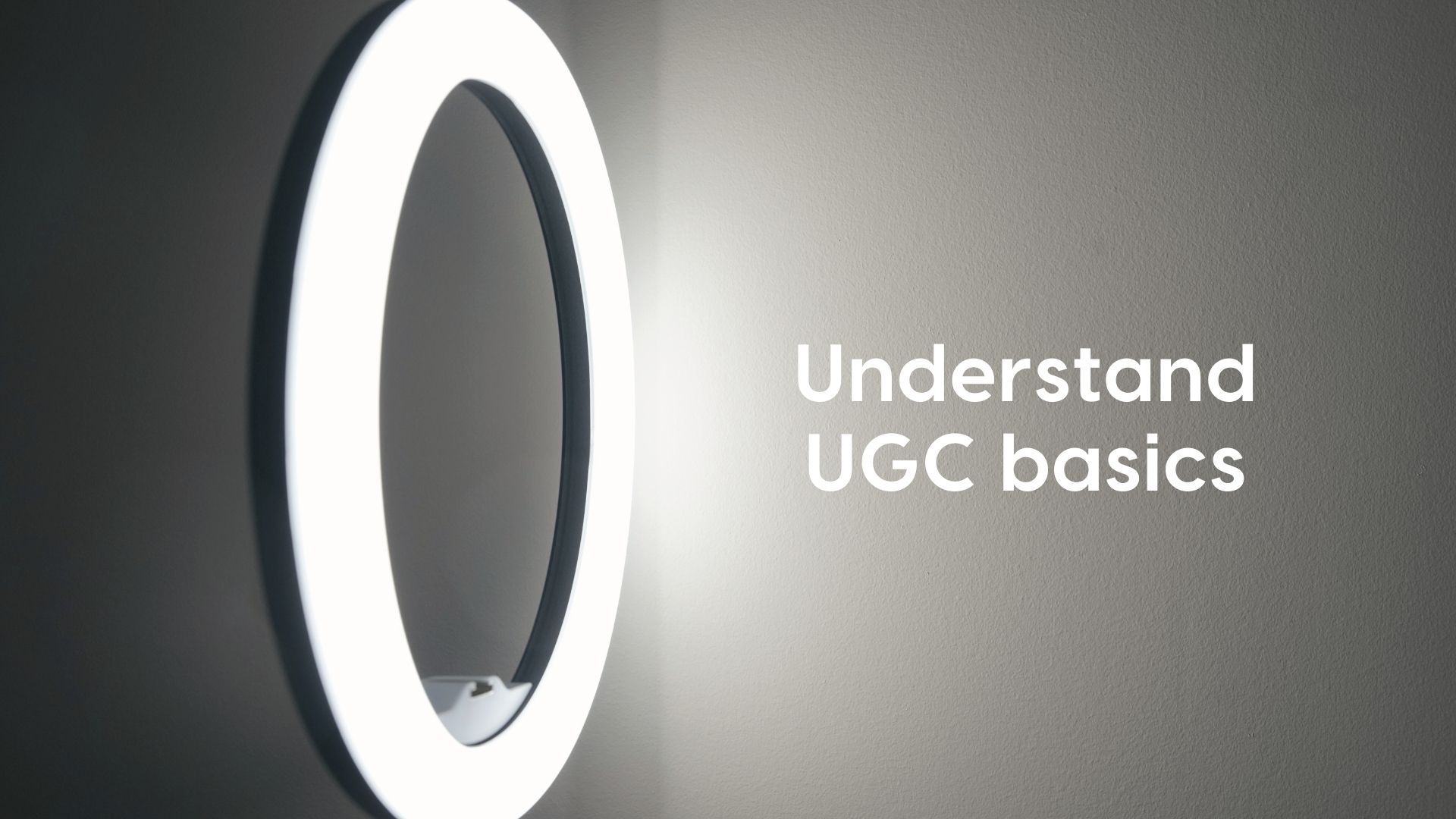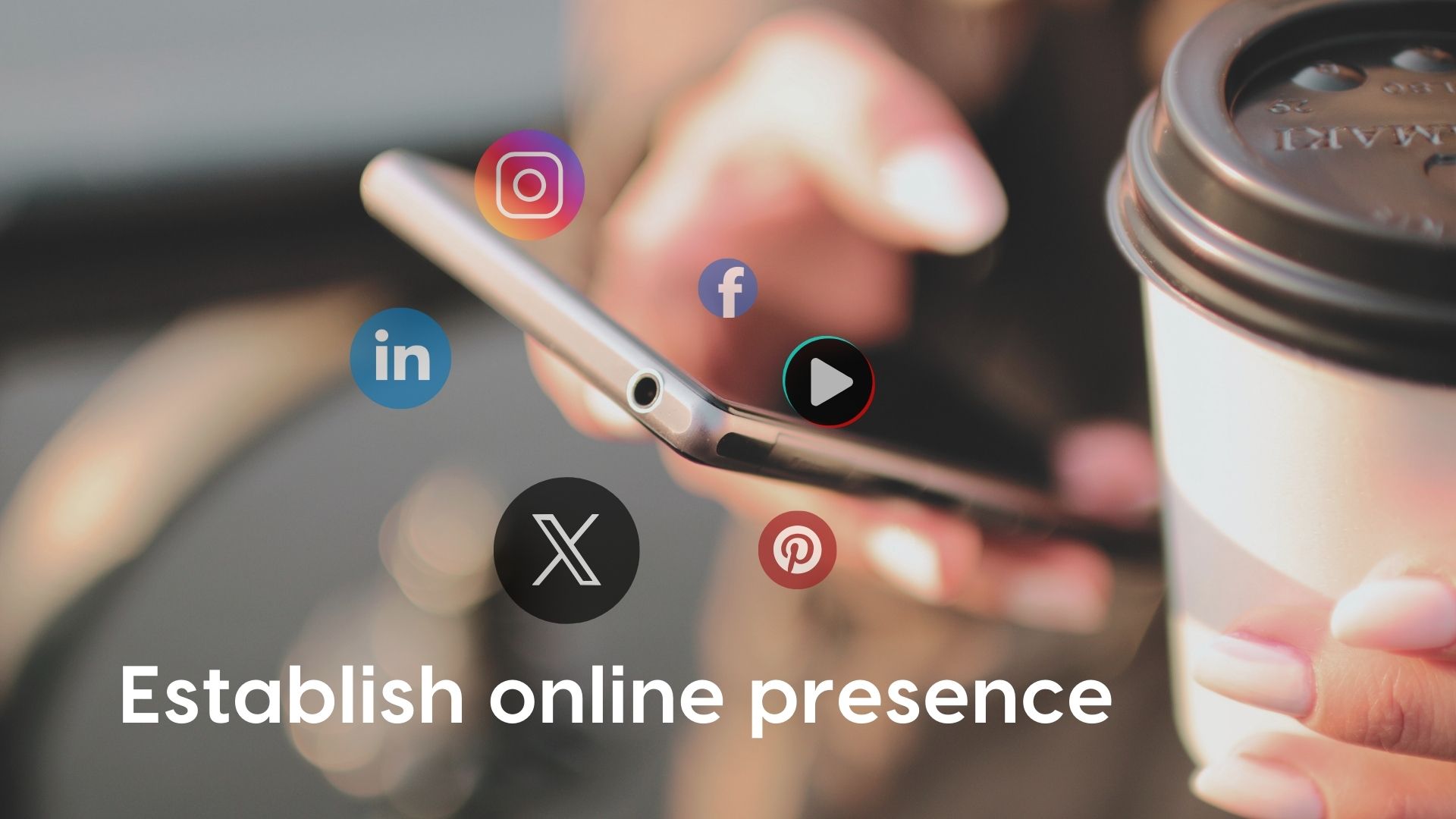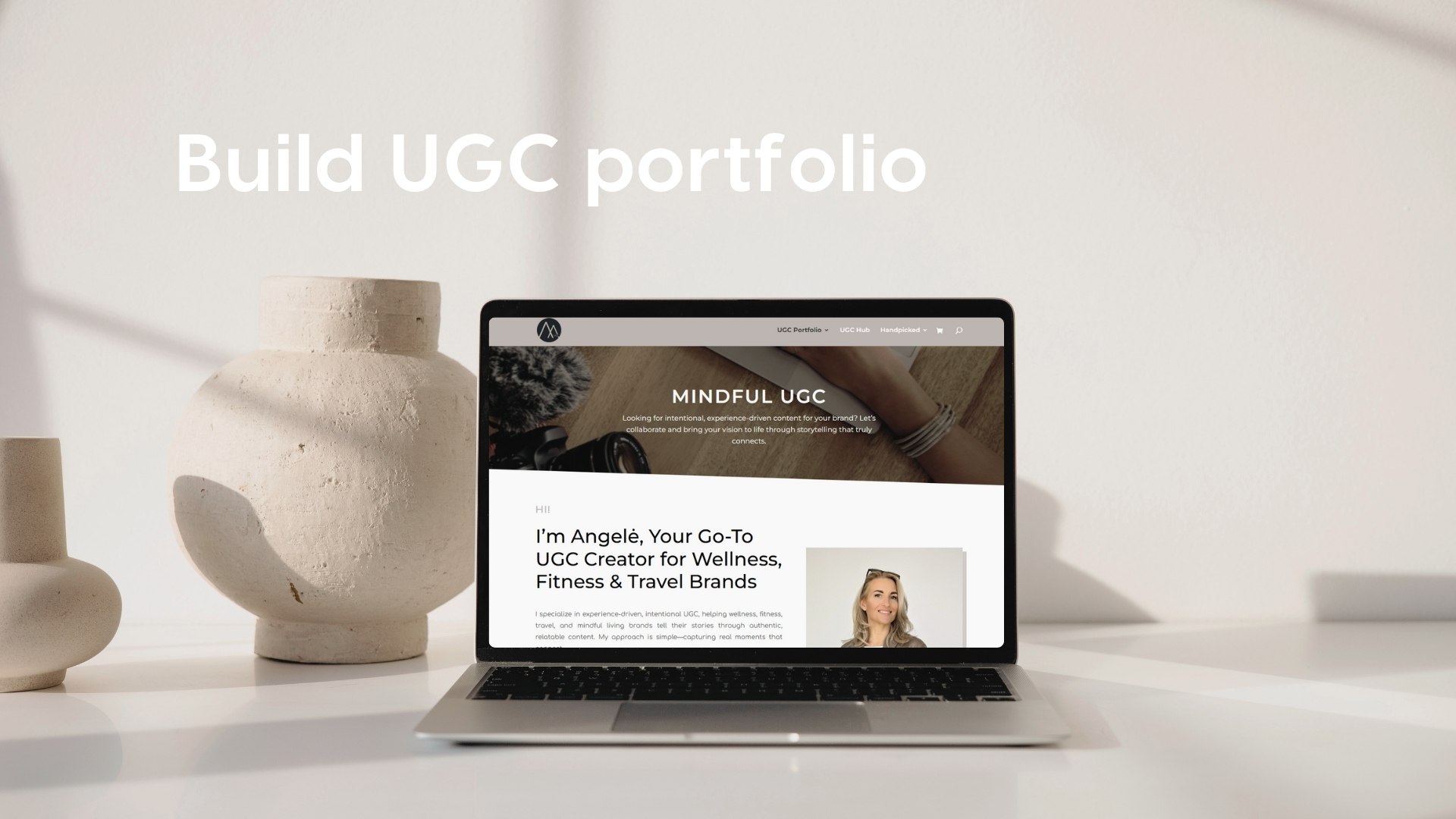UGC 101
How to Become a UGC Creator: A Simple 6-Step Guide for Beginners
User-generated content (UGC) is changing the way brands connect with people, and the best part? You don’t need a massive following to start creating content that matters. If you love filming, taking photos, or just sharing your honest thoughts in creative ways, becoming a UGC creator could be your next move.
Honestly, I’ve been right where you are—Googling “how to start UGC” and ending up more confused than when I started. Every guide felt either too vague or too overwhelming. That’s why I decided to simplify the whole thing and create this UGC HUB. I pulled together the exact steps I’ve personally been following into one clear, beginner-friendly blueprint.
So if you’re wondering how to become a UGC Creator or how this all really works, you’re in the right place. Let’s begin!
Step 1: Learn and Understand What UGC Really Is
Before you start filming your morning matcha or snapping dreamy product shots, it’s super important to understand what user-generated content (UGC) actually is—and what it isn’t. The UGC space is buzzing right now, but with that excitement also comes confusion. So let’s clear it up in a chill, no-fluff way.

What Is UGC?
At its core, UGC is content created by real people (like you and me) that brands use to promote their products or services. This could be anything from a casual unboxing video, a voiceover showing how you use a product, or a photo that looks like it came from your camera roll, and not a marketing agency!
The goal? Relatability and trust.
Brands are shifting away from polished ads and toward content that feels authentic. That’s where UGC creators come in. You’re not selling—you’re storytelling, sharing honest experiences that help potential customers feel connected.
UGC vs. Influencers: What’s the Difference?
This part trips a lot of people up, so let’s break it down:
- Influencers build their own audience and promote products on their own platforms. Their value often comes from their reach and influence over their followers.
- UGC creators, on the other hand, create content that brands post on their channels (ads, websites, social media). You don’t need a big following. You just need creativity, intention, and the ability to make content that speaks to the brand’s ideal customer.
So yes, you can be a full-time UGC creator without ever becoming an influencer! Total relief, right?
How Do UGC Creators Make Money?
Here’s where it gets exciting. There are a few ways UGC creators earn income, and most creators use a mix of them:
Paid brand collaborations:
A brand hires you to create specific videos or photos they’ll use for marketing (often ads).
Content licensing:
You retain rights to your content, but brands pay for permission to use it for a set time period.
Ad usage fees:
This is when a brand uses your video in paid ads. You charge based on how long or where they’ll run the ad.
UGC platforms and marketplaces:
Some websites (like Fiverr, Upwork, or UGC-specific platforms) connect you with brands looking for content creators.
Understanding all these basics is the first real step in learning how to become a UGC creator the right way, without the overwhelm.
PRO TIP – Don’t stress about monetizing from day one. Focus first on building your portfolio, getting confident with your style, and learning what kind of content feels natural to you. The rest will come.
Step 2: Set Yourself Up as a UGC Creator
Okay, now that you’ve got a handle on what UGC actually is, it’s time to take practical steps in how to become a UGC creator, starting with the tools and systems that make your process smoother.
Think of this step as prepping your toolkit—no need to go overboard or be perfect. It’s just about setting yourself up to create with more ease, flow, and professionalism.
Choose Your Niche
Let’s be real: You can technically create content for every category under the sun… but niching down just a little helps you become more recognizable and confident in your style.
Ask yourself:
- What topics naturally excite me?
- What products do I already use and love?
- What kind of content do I enjoy watching or creating?
Whether it’s wellness, skincare, slow fashion, cozy home vibes, travel, tech, or coffee rituals—lean into what feels true to you. That way, your content won’t feel forced. It’ll just feel like you, doing your thing.
TIP – Remember, your niche isn’t set in stone. Let it evolve as you explore.
Get the Right Equipment (Don’t Overthink This)
You don’t need a fancy studio setup to create UGC. Seriously. Most successful UGC creators start with just their phones and natural light.
Here’s what’s actually helpful:
- Phone with a decent camera (iPhones or newer Androids work great)
- Ring light or softbox (for gloomy days or indoor shots)
- Tripod (even a mini one works—it saves you from the whole “balancing-on-a-stack-of-books” situation)
- Editing apps like CapCut, InShot, or VN—all beginner-friendly and perfect for TikTok-style videos or Instagram reels
You don’t need everything at once. Start simple, upgrade as you grow.

Create a UGC-Specific Email
Trust me—this is a game-changer. It keeps all your brand emails, platform notifications, and pitch responses in one place (aka not buried under online shopping receipts and newsletters you forgot you subscribed to).
Use something clean and professional like:
[email protected] or [email protected]
Bonus: It also makes you look more organized and serious when reaching out to brands.
Join UGC Platforms
Now for the fun part—finding your first gigs! You can start building experience (and getting paid) by signing up for UGC platforms that connect creators with brands. Ideally, you’ll want to join once you’ve got something to show—a mini portfolio, a few photos, or sample videos—but honestly? Signing up early and putting yourself out there never hurt anyone. It’s all part of the process.
Here are a few to check out:
- Billo – Focused on short video ads, super beginner-friendly
- JoinBrands – Connects creators with product-for-content and paid collabs
- Trend.io, Collabstr, or Passionfroot – Worth exploring once you’re more established
- Influee or Creatorjobs – For content creators in Europe or Germany specifically
Just be mindful that these platforms often take a cut or operate on their own rules, so always read the fine print and don’t undervalue your work.
Setting yourself up doesn’t have to feel overwhelming. Start with the basics, get comfortable, and remember—it’s okay to grow slowly. The key is just to start.
Step 3: Establish Your Online Presence
Okay, here’s the thing: you don’t need to be Insta-famous or TikTok-viral to be a UGC creator. But having an online presence that looks polished, intentional, and you? That’s what helps brands take you seriously.
Think of it like your digital storefront—it’s where potential clients (and curious scrollers) land to see what you’re all about. It doesn’t need to be perfect. It just needs to reflect your vibe and showcase your creative potential.
Create Dedicated UGC Social Media Accounts
If you haven’t already, now’s the time to set up your UGC-specific accounts. This helps you keep things separate from your personal life and makes it easier for brands to see your work in one clean space.
Focus on the platforms where you naturally enjoy hanging out and creating:
- Instagram – Great for portfolio-like grids, reels, and calm aesthetic content
- TikTok – Ideal for showing your creativity, transitions, and behind-the-scenes
- X/Twitter – A more conversational space to share thoughts, connect with other creators, and land unexpected collabs
You don’t have to be on every platform. Start with one or two that feel manageable, and grow from there.

Optimize Your Bio
Your bio is precious real estate. Let people know exactly what you do in just a few words—this helps brands (and other creators) know how to engage with you.
Include:
- What you do: “UGC Creator | Niche”
- Who you help: “Helping brands connect with their audience through real, relatable content”
- A call to action: “Open to collabs 💌 DM or email to work together”
Bonus points for a clean profile picture and a link in bio to your portfolio or a Linktree-style page with your contact info.
Start Posting Content (Even If You’re Just Starting Out)
Share samples of UGC content that reflect your niche and style—this helps brands quickly see your potential and reinforces your journey in how to become a UGC creator.
You don’t need paid brand deals to start sharing UGC-style content. In fact, mock content (aka content you create on your own using products you already own) is a great way to show your skills and build trust.
Some ideas to start with:
- A product you genuinely use and love
- A day-in-the-life or morning routine that features a brand
- Simple unboxing or “how I use this” style videos
- Still photos or carousel posts that feel branded but natural
Think of it as your practice ground. These posts build your confidence and your portfolio at the same time.
Engage With the UGC Community
One of the best parts about becoming a UGC creator? The community. Creators are out here sharing tips, trends, wins, and lessons—and being part of those conversations can really help you grow.
Ways to get involved:
- Follow other UGC creators whose style inspires you
- Leave thoughtful comments and reply to stories or tweets
- Share your process, your struggles, or even small wins—it’s all relatable
- Save posts that resonate so you can come back to them for inspo
You never know who’s watching—and the more you show up as your genuine self, the more connections (and opportunities) you’ll attract.
Your online presence doesn’t need to be flashy or perfectly curated. It just needs to feel real, intentional, and aligned with the kind of work you want to create.
Step 4: Start Building Your UGC Portfolio
Now that you’ve set up your online presence, it’s time to create the heart of your UGC business—your portfolio.
Your portfolio is one of the most important tools in how to become a UGC creator that brands can trust and want to work with.
Think of this as your digital resume, but way more fun. It’s where brands can get a feel for your creative style, your quality, and your potential. And the good news? It doesn’t have to be complicated or over-designed. You just need a clear, curated space that says: “Here’s what I can create for you.”

Select Your Best Work
You don’t need 20+ examples to impress a brand. Honestly, 5 to 10 strong pieces are more than enough to start.
Focus on variety:
- A mix of formats (talking videos, voiceovers, aesthetic b-roll, unboxings, etc.)
- Different types of products (wellness, skincare, home, food—whatever fits your niche)
- Content that feels authentic and shows what you can do
TIP – If you’re just starting out, mock content works perfectly. Brands want to see how you create, not how many paid partnerships you’ve had.
Use a Simple Portfolio Platform
There’s no need to invest in a fancy website right away. Your goal is to make things easy to view and easy to navigate. That’s it.
Here are a few beginner-friendly options:
- Google Drive – Clean and simple, just organize into folders and add short captions
- Canva – Create a visually branded PDF or webpage with clickable links
- Notion – Minimal, customizable, and very aesthetic when done right
- Personal Website – If you’re thinking long-term, building your own website can be a smart move. It gives you full control and a space that’s 100% yours. This link includes my referral code for Hostinger, which I’ve been using for years and genuinely love (especially as a blogger). That said, no pressure. A personal site is totally optional, especially if you’re not super comfy with web design just yet.
Whichever platform you choose, make sure it works on mobile too—many brands will check your portfolio from their phones.
Highlight Your Skills Clearly
Think of this like giving context without overexplaining. Under each video or photo, include a short line or two:
- What type of content it is (“TikTok-style voiceover,” “Product tutorial,” “Aesthetic reel”)
- Any relevant info (e.g., “Shot and edited on iPhone,” “Turnaround time: 2–3 days,” “Worked with XYZ brand” if applicable)
- Your creative role (filming, editing, scripting, voiceover—all of it counts!)
You can also include a short intro section that sums up your style, tone, and what kind of brands you love working with.
Update It Regularly
Your portfolio should grow with you. As you gain experience, improve your editing, or discover new styles, make time every few weeks to update your portfolio. Remove older work that no longer represents your best quality, and replace it with content you’re proud of.
Set a reminder once a month to review and refresh it—even if it’s just swapping one video.
Your portfolio is like your creative fingerprint—it shows brands how you tell stories, not just what you shoot. Keep it simple, keep it true to your voice, and don’t wait until it’s “perfect” to share it. Done is better than perfect here.
Step 5: Market Yourself and Find Clients
Alright, your portfolio is looking fresh. You’re ready. Now comes the exciting (and slightly nerve-wracking) part—getting your first paid UGC gigs.
This is where your confidence and consistency start to pay off. The truth? You don’t need to wait for brands to magically find you. You can start the conversation, show your value, and open the door to opportunities. Here’s how to make it happen, step by step:
Pitch to Brands (Yes, Even If You’re New)
Reaching out to brands is a key turning point in how to become a UGC creator who actually gets paid, not just one who creates for practice.
Don’t overthink it—brands want to work with creators who can help them connect with their audience in a genuine way. That’s you.
Here’s what to include in a simple, effective pitch email or DM:
- Introduce yourself and what kind of content you create
- Mention why you love the brand or product (keep it personal + real)
- Briefly explain how your content could benefit them (think: storytelling, relatability, quality)
- Add a link to your portfolio and contact info
Example line: “I’d love to create relatable, UGC-style content that helps highlight how your product fits naturally into everyday life. Here’s a link to my portfolio if you’d like to see more.“
Aim to keep it short and sweet—brands are busy, and a clear message will stand out more than a long one.

Leverage Social Media Like A Pro
Your social accounts are not just for posting—they’re your mini-marketing machine. Posting consistently (even just 2–3 times a week) keeps you visible and shows brands you’re active and professional.
What to do:
- Use UGC-related hashtags like #ugccreator #ugccreatorcommunity #ugccontent
- Tag brands in your content (especially when it’s a product you genuinely love)
- Write helpful or reflective captions that speak to your values and style
- Add “UGC Creator” to your bio so you’re easy to find
Remember: the more you show up online, the more discoverable and credible you become.
Network With Other Creators
The UGC world is surprisingly friendly. Seriously. Creators share leads, drop tips, repost job opps, and support each other all the time.
Here’s how to build those connections:
- Leave meaningful comments on other creators’ posts
- Send a quick DM complimenting someone’s work or asking a genuine question
- Join UGC Facebook groups or Slack communities
- Tag or collaborate with creators in similar niches
Not everything has to be transactional—sometimes, just vibing and connecting naturally leads to new ideas or referrals.
Set Your Rates (Without the Stress)
Pricing is tricky at first, but don’t let it stop you. Even as a beginner, your time, creativity, and energy have value.
Start by doing a little research:
- Look up current UGC pricing guides (hint: creators on TikTok often share helpful breakdowns)
- Decide what you’re comfortable charging for: one video, photo sets, bundles, usage rights, etc.
- Be transparent in conversations, and don’t be afraid to negotiate with kindness
Example: “For this project, my rate would be €150 for one video with full usage rights for 6 months.“
Confidence goes a long way, especially when you back it up with quality work.
Create Contracts (Even Simple Ones)
Contracts = clarity and protection for both sides. You don’t need anything super formal—a simple agreement outlining:
- Deliverables (what you’re creating)
- Timeline (when you’ll deliver it)
- Payment terms (amount + due date)
- Usage rights (where/how they can use the content)
You can use free templates from platforms like Notion, Canva, or even Google Docs to get started.
PRO TIP – Always get things in writing—even if it’s just a friendly brand collab. It helps set expectations and avoids awkwardness later.
Putting yourself out there can feel vulnerable, but it’s also incredibly empowering. You’re not just “looking for work”—you’re building a creative business around your skills and your voice. Be consistent, be kind, and back yourself. The right brands will notice.
Step 6: Scale & Grow as a UGC Creator
Okay—you’ve landed your first client, built your portfolio, and started marketing yourself like the creative boss you are. Now what?
This is the exciting part: growing beyond the basics and building something sustainable. Scaling your UGC creator business isn’t about doing more just for the sake of it—it’s about doing things smarter, refining your craft, and exploring new ways to get paid for the skills you already have.
Here’s how to keep the momentum going:
Master Filming & Editing (Without Needing Fancy Gear)
As you gain experience, small upgrades in your production quality can make a big difference. You don’t need a full camera setup, but you can:
- Learn new transitions or storytelling techniques
- Improve lighting (even natural light positioning can be a game changer)
- Explore editing apps like CapCut, InShot, VN, or even Final Cut Pro as you grow
- Practice voiceovers, product close-ups, and timing your shots with music or hooks
The more comfortable you get behind the lens and in your editing flow, the more polished and engaging your content becomes.

Stay Updated on Trends (But Don’t Lose Your Voice)
It’s helpful to keep an eye on what’s trending in the UGC world, but don’t feel pressured to copy everything. Instead:
- Scroll through TikTok or Instagram regularly to spot formats or hooks brands are loving
- Join creator newsletters or community groups to stay in the loop
- Recreate trending videos in your niche—just add your own twist
- Keep your content style aligned with your own values (for example, mine is calm, intentional, helpful… you know the vibe ;))
Trends come and go—authenticity sticks.
Diversify Your Offers
Once you’re confident creating UGC videos or photos, you can expand your services to increase your income and flexibility. Here are a few ideas:
- Voiceovers – Calm narration (that’s my vibe, but you can pick yours), product how-tos, or storytelling voiceovers are in high demand
- Product photography – Clean, aesthetic stills for social feeds or websites
- Testimonials – Natural, “talking to the camera” style videos that feel like a genuine recommendation
- Scriptwriting – Some brands love it when creators help them nail the messaging, too
Bonus: These are also great add-ons when pitching to brands.
Build Long-Term Brand Relationships
It’s easier (and more fulfilling) to work with repeat clients than to chase new ones every month. Once you’ve worked with a brand and delivered great results:
- Follow up with a thank-you message and express your interest in future work
- Offer ideas for the next round of content (proactive = professional)
- Keep them in the loop when you update your portfolio or change your rates
Relationships = recurring income + trust + the chance to grow together.
Explore Passive Income Streams (If You Want To)
Not everything has to be brand deals. Once you have a bit of experience, you might find people asking how you do what you do. That’s a great sign—and a gentle invitation to explore:
- Offering 1:1 consults or feedback sessions for other new creators
- Creating mini guides or resources about your UGC process
- Eventually (if you want), launching a small course or workshop around your niche
Don’t worry about doing it all at once. Scaling is about growing with intention, not overloading yourself. You’re allowed to take it slow and do it your way.
This is where how to become a UGC creator turns into how to stay one, grow one, and thrive in the long term.
Final Thoughts
If you’ve been asking yourself how to become a UGC creator but felt unsure where to start, I hope this guide made things feel a little clearer and more possible.
Becoming a UGC creator isn’t about overnight success or chasing trends—it’s about showing up, creating with intention, and learning as you go. This journey blends creativity, curiosity, and a little bit of business sense. By following these six steps, you’re not just starting a side hustle—you’re building something real, something yours.
Remember, it’s okay to start small. You don’t need everything figured out to begin—just a bit of clarity, some courage, and a willingness to grow. Keep things simple, stay consistent, and most importantly… make it fun.
You’ve got this! 🙌🏼
I have a video for you if you would rather listen to these UGC beginner steps than make notes. Also, if you’d like to stay updated when every time a new episode comes in, don’t forget to subscribe to my Mindful UGC Creator Channel! See you there!
Need a little help to organize your day/ week/ month? Here is my favorite tool to stay productive and smash my goals!
Want to learn more about UGC or need advice on bookkeeping already? I got you covered!
What is the Best Way to File Taxes as a UGC Creator?
That's the exact question I asked Google last week — and today, I finally hit 'Submit' on my own tax return. As a UGC creator based in Munich (working with...
Start where you are.
Use what you have.
Let that be enough for today.

